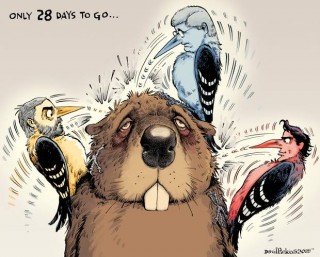Bill Curry reports on the destruction of a statue of Sir John A. Macdonald in protest of Mr. Macdonald’s role in the racist policies of his time in office. He sets it in the context of the current international anti-racism protests.
Introduction to the article (perhaps by having everyone read it)
This lesson is designed for secondary students, to be applicable to both online and classroom learning situations. Whether in one-on-one settings, in small groups or cohorts, or via a learning partner online, this lesson involves reading, discussion, and a written report.
Teachers or group leaders or one member of a pair of students can start the lesson by asking whether students have seen media reports on the protests over historical statues in the United States and Canada. If so, discuss briefly to bring everyone up to speed, then read the article, aloud to others, or alone.
Subject Area(s) covered
Social studies, Canadian history, current events
New Terms to explain
Head tax, institutional racism, BIPOC, acronym
Materials Needed
Access to the article and the Internet to access the link https://www.thebipocproject.org/
Key things students can learn from this lesson
- The importance of understanding how a statue can be both a harmless reminder of an influential historical person for a white person, and a symbol of oppression for people of colour.
- The reasons BIPOC gave for tearing down the statue of Sir John A. Macdonald, and the reasons why others call this action simple vandalism and/or historical revisionism.
- The power of symbols in the creation of a nation.
Action (here’s how we’ll do it)
Students in their group (online and classroom) will answer the following questions and submit their answers in a comprehensive, single report for evaluation either in writing or, for online students, by a method determined by them and the teacher:
- What does the acronym BIPOC stand for?
- Who was John A. Macdonald?
- Access the link provided (https://www.thebipocproject.org/).
- Read the main quotation by Audre Lord on their website. In your own words, explain what she means.
- Does Audre Lord seem to be speaking for you? Why or why not?
- Many people say, “I don’t see colour, I just see people.” In your experience, is this something you might say? If so, it would seem you do not “celebrate differences.” If you would not say that, why not?
- Premier Kenney called BIPOC “a roving band of thugs.” Do you agree or disagree?
- Do you think taking down the statue was an act of vandalism? Give reasons for your answer.
- There is an image of John A. Macdonald on the Canadian $10 bill. If you agree the statue should have been taken down—legally or illegally—do you agree that we should also change the image on our currency?
- Finally, look up the term “institutional racism.” Do you believe aspects of Canadian life, our justice and social service systems, are institutionally racist? Explain.
Consolidation of Learning
- When you’ve finished your report, share it with your partner or group, adding notes based on their comments and feedback. Submit your work, with your notes added and marked as such, to your teacher.
Success Criteria
Students can:
- describe what took place in Montreal,
- explain what BIPOC means and its purpose,
- demonstrate some perspective on the reasons for and against removing statues of historical figures,
- change their views—or not—after discussing their own views with peers or others.
- locate themselves in this discussion, relative to how they identify themselves as different.
Confirming Activities
- In everyday discussions and conversations, students identify and point out instances of racism and demonstrate greater awareness of the part institutional racism plays in a society.
Helpful Internet Searches
- Learn about John A. Macdonald’s “head tax.” https://www.thecanadianencyclopedia.ca/en/article/chinese-head-tax-in-canada
- Learn about the residential school system: https://www.culturalsurvival.org/publications/cultural-survival-quarterly/indian-residential-school-truth-and-reconciliation
Activities to do together
- Talk with your parents, friends, or caregivers about the statues issue.
- Draw attention to someone saying, “I don’t see colour or differences…” and engage them in any discussion that follows.
- When watching a movie or TV series, see if you detect any ways in which people who identify with BIPOC are treated by those who do not.

